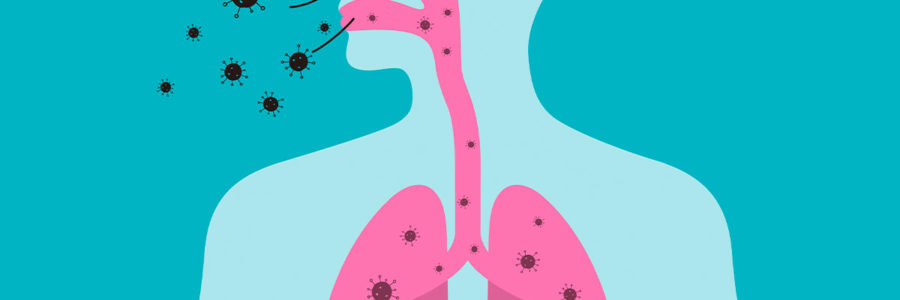The Oral Microbiome: Most people are increasingly aware of the concept of microbiome health, thanks to the incredible scientific advancements on the gut microbiome. Lesser known but equally important is the mouth microbiome, which acts as the main entry point to the body and generator of whole-body health. Today we explore all things oral microbiome and how to care for your mouth correctly.

This article has been medically reviewed by Dr. Charles Penick, MD
What is the Oral Microbiome?
The oral microbiome is the collective genome of organisms that reside in the oral cavity.1 In other words, it is the intricate ecosystem of living things inside your mouth, including bacteria, fungi, viruses, and protozoa, both “good” and “bad.”
Bacteria are considered “good” or “bad,” depending on how the microorganism interacts with the host (you!). The bacteria would be beneficial and good if it supports your overall health, well-being, and balance. It would be considered harmful and bad if there is an imbalance or is pathogenic, fungal, or bacterial.
The Oral Microbiome: The Mouth As A Gateway
Our mouths are one of the significant points of direct entry into the body. The mouth’s skin is semi-permeable, offering direct access to the bloodstream. It is also an entry point because swallowed things can make their way into the body via the gut lining. This first point of contact is vital in protecting us from outside organisms.2
Why Are Dental Problems So Common These Days?
Although we have some of the most advanced dentistry globally, the developed world has some of the worst dental problems. From root canals, cavities, receding gums, gum disease, sensitive teeth, severely misaligned or crooked teeth, and deformed jaws. If we have access to the latest science in dental health, why are we at an all-time high regarding dental problems?
The irony is that modern methods do not equal the best practices, especially in dentistry. This was made evident by Weston A. Price, the founder of the research institute National Dental Association (which later became the research section of the American Dental Association) and was the NDA’s chairman from 1914 to 1928.3 Price was a dentist who traveled the world to get to the bottom of this question, finding out along the way that tribes and cultures that had little to no modern dental intervention have the best dental hygiene and health.
His findings also highlighted that these ancient people’s skulls had no cavities, despite their lack of modern interventions like 6-month cleanings, floss, mouthwash, and fluoridated toothpaste. Their jaws formed with more width, and their dental arches were wider, whiter, and straighter than anything he had seen coming out of modern cultures.3
Dr. Price’s findings highlighted that modern innovation not only fails to solve many dental problems but also frequently makes the situation worse. By introducing harsh chemicals and intense orthodontics, we fail to honor the natural state of vibrant health that our mouths exhibit when we live in tune with nature.
The Oral Microbiome: Caring for Your Mouth Holistically
Learning from the excellent oral health of our ancestors does not require ditching your toothbrush in favor of a twig toothpick. As modern humans, we have the gift of combining modern innovation with ancestral knowledge. The key is finding balance and honoring that our mouths are alive and need to be cared for.
Holistically caring for your mouth can be broken down into two sections: the things to avoid and the habits to implement.
Things to Avoid
This section highlights how toxins and antibacterial agents disrupt the oral microbiome. Supporting good bacteria and balance is essential, so using harsh products or neurotoxic materials can lead to microbiome dysbiosis and toxicity in the body.4
- Mercury Fillings
Also known as amalgam or silver fillings, these highly toxic and dangerous fillings are still used today. Whether you got fillings put in yesterday, two years ago, or 25 years ago, amalgam fillings off-gas heavy metals every day.
The World Health Organization considers mercury one of the top ten chemicals of major concern to public health.5 When mercury fillings are removed from the mouth, they must be treated as hazardous, toxic, and disposed of as infectious waste. Yes: the same mercury marketed as “safe” in the mouth becomes highly dangerous once removed.
The reality is that no amount of mercury is safe in the mouth. Amalgam fillings are linked to a wide range of neurological and autoimmune conditions because the poison builds up in the body over time.
Not getting mercury fillings is best, but removing them safely from a certified biological dentist is the next best option.
- Conventional Toothpaste and Mouth Wash
Many of the conventional toothpaste and mouth wash ingredients are highly toxic and abrasive. Look no further than the box itself to see a poison control number to call in case of ingestion. The problem is that our mouths’ skin is highly porous and gives direct access to the bloodstream. If health is a priority to you, toxic ingredients should not be put in your mouth (or on your skin), whether or not you swallow it.
Some of the commonly used ingredients to avoid are:
- Fluoride
- Triclosan
- Sodium Lauryl Sulphate (SLS)
- Propylene glycol
- Artificial sweeteners
- Diethanolamine
- Parabens
Harsh or toxic chemicals disturb the oral microbiome, leading to an imbalance of good and harmful bacteria.4 The irony is that the products that promote fresh breath and healthy teeth can have the opposite effect. By stripping our mouth of beneficial bacteria and using abrasive agents on our enamel, the long-term result is bad breath, sensitive teeth, and damaged gums.4-6
- Hard Bristle Toothbrush
Everyone should be using a soft bristle toothbrush. Although people may think using a stiff brush is more effective at getting off plaque or grime, the reality is that the harder the brush, the more abrasive the result.7 Using a soft brush with natural paste (or even simply using bi-carb soda) is the best option to protect gum and enamel health.
- Tooth Whitening Strips or Gels
Conventionally sold whitening strips or gels contain highly abrasive and toxic ingredients that weaken enamel and may cause permanent damage to teeth.8 Teeth are white on the inside, and the stains you see are more likely due to the stained plaque on the teeth. Brushing correctly and avoiding teeth-staining foods and beverages (like coffee, blueberries, and red wine) is the best bet. A simple polish with a soft brush and bi-carb soda will do when consuming staining foods.
Other natural teeth whitening techniques, like oil pulling, will be mentioned in the next section.
- Avoid Treated City Tap Water
To kill off pathogens and bacteria, tap water is treated with chemicals that do not promote oral health. Fluoride is the more controversial additive associated with neurotoxicity and l delayed neurodevelopment in adults and children.9 But whether you are on the pro-fluoride or against-fluoride side of the debate, many other additives and bi-products found in treated tap water are not oral microbiome friendly. Look no further than chlorine, an anti-bacterial agent added to water to kill “bad” bacteria in the water. The problem with this is that it also kills the “good” bacteria found in the mouth and gut microbiome.10
The Oral Microbiome: Habits to Implement
- Go Natural With Your Oral Care
One of the first habits to implement for a healthy oral microbiome is avoiding conventional dental care products loaded with harsh or toxic agents. This applies to toothpaste, floss, and mouthwash: go natural with oral care.
Be mindful that “natural” is used as a marketing tactic by many companies that make products appear natural when they are anything but. When in doubt, put down the toxic option and brush with bi-carb soda and water until you confidently find a toothpaste that won’t harm your mouth.
Two of our favorite brands include Revitin™ and Dentalcidin Broad Spectrum Toothpaste with Biocidin.
Revitin™ is safe enough to ingest and contains no harsh detergents or chemicals. Their proprietary blend of antioxidants, micronutrients, herbal extracts, and homeopathic salts has been formulated to support the mouth’s ecosystem.
Dentalcidin Broad Spectrum Toothpaste contains Biocidin, a proprietary blend that can help remove biofilms and plaque and is an excellent way to promote and maintain healthy teeth and gums. It contains natural ingredients like bilberry extract, noni, milk thistle, echinacea, goldenseal, shiitake, and black walnut.
- Oil Pull
Oil pulling is an ancient Indian oral health tip that is taught through Ayurvedic principles to this day. The oil acts as an adsorber, pulling toxins and bacteria and trapping them in the oil, which you then spit out.11 It works to naturally whiten teeth by removing the bacteria that turns into plaque and stains.
Studies show that oil pulling is as effective as using harsh mouthwash in removing Streptococcus mutans (the most common organism causing dental cavities) 12.
To oil pull, put one tablespoon of coconut oil or sesame oil in your mouth and gently swish for 10-20 minutes. Make sure to spit out the oil, not swallowing it and ingesting toxins and bacteria. It works best if done first thing in the morning and then brush and floss as usual.
For maximum results, try oil pulling with added essential oils that support oral health, like peppermint, clove, or anise.
- Polish with Bi-Carb Soda
Gently brushing with a paste made of bi-carb soda and water is a fantastic natural way to polish your teeth. This can also be used in a pinch to brush your teeth, but ideally, it would be used in tandem with toothpaste.
Bi-carb soda is a safe, mild agent that will not cause dental abrasion to the tooth’s enamel.13 It alkalizes the mouth, which supports the proliferation of good bacteria. It also helps reduce plaque and gingivitis by disrupting biofilms that encourage harmful bacteria to take over.13 It is a great option to polish and rinse after oil pulling!
- Tongue Scrape
Tongue scraping is another Ayurvedic oral health trick that uses a copper tongue scraper to gently scrape the tongue’s surface to remove any excess bacteria. Think of it like brushing your tongue. Approximately 85% of all halitosis (bad breath) cases originate within the mouth, and about 50% are caused by tongue residue.14
A study that compared eliminating bacteria (specifically Volatiles Sulphur Compounds) from the tongue using a toothbrush or a copper tongue scraper highlighted that tongue scrapers removed about 75% of VSCs; the toothbrush only removed 45%.14
- Rinse with Minerals or Probiotics
Another great oral-microbiome boosting tip is to swish with filtered water enhanced with minerals or probiotics. Incorporating minerals that support a healthy microbiome will nurture the mouth’s ecology and act as a natural barrier to harmful bacteria.6
Some options to swish with include:
- Cytominerals
- ION Gut Health
- A probiotic
- A high-quality sea salt
- Nourish your Body
The nutrition that impacts dental health starts before conception. When it comes to dental health, nourishing your body is essential before conception. A mother’s nutrition, pre-conception, and in utero affect the baby’s jaws and teeth formation and lays the foundation for dental development into adulthood.2
Although you cannot go back in time to your pre-conception, nourishing yourself from now will dramatically impact your oral microbiome and dental health. The pillars of dental health nutrition include:
- High-quality animal proteins (like beef, lamb, and chicken) and animal fats (like tallow, lard, butter, and ghee)
- Fermented foods and probiotic-rich beverages (like sauerkraut, kimchi, beet kvass, and yogurt)
- Avoiding refined foods (like sugar, wheat, and soy)
- Keeping balanced blood sugar
- Drinking filtered or spring water (avoiding tap chemicals)
- Supplementation with ION Gut Health
- See a Biological Dentist
For many people, the damage is well on its way when it comes to dental health. Undoing years of harsh chemicals, a poor diet, or things like mercury filings may require the support of a dentist. Luckily, holistic dental practitioners, known as biological dentists, approach dentistry from a more natural place. You can find biological dentists by visiting IAOMT.ORG.
Summary
Although we live in the most scientifically advanced dentistry age, dental problems are at an all-time high. Many people have introduced harsh and toxic dental products in modern American diets instead of addressing the root cause and working with nature. A more natural and balanced approach can restore dental health by avoiding mercury fillings, conventional toothpaste, hard bristle toothbrushes, harsh tooth whitening strips, and tap water. Habits like oil pulling, tongue scraping, remineralizing rinses, and proper nutrition are the key to a holistic approach to dental care.
Your mouth is like an organic garden.
Just like microbes and good bugs help keep pests away and plants thriving, your mouth is rich with helpful, friendly bacteria that contribute to a balanced environment. But, just like a garden, the ecosystem is decimated when you introduce toxic chemicals.
The toxic chemicals in your mouth? They’re coming from your toothpaste and mouthwash. Most conventional oral hygiene products contain harsh and potentially dangerous chemicals that are NEVER meant to swallow —even by accident.
However, many natural kinds of toothpaste leave your mouth feeling like you haven’t brushed at all! Not anymore.
Not only is Revitin™ designed to work with the natural defenses in your mouth, but it’s also safe enough to ingest and contains no harsh detergents or chemicals. This patented blend of antioxidants, micronutrients, herbal extracts, and homeopathic salts has been formulated specifically to support the mouth’s ecosystem.
PLUS, it leaves your teeth feeling squeaky clean without using harsh whitening agents. Pair Revitin with Coconut Oil Pulling by Skinny & Co first thing in the morning to strengthen gums, freshen breath, and clean your teeth —without acidic, enamel-stripping additives.
>> It’s time to clean up your oral hygiene with Revitin Oral Therapy and Coconut Oil Pulling that actually works!
Medical Disclaimer: This article is based on the opinions of The Cell Health team. The information on this website is not intended to replace a one-on-one relationship with a qualified healthcare professional and is not intended as medical advice. It is intended to share knowledge and information from the research and experience of the Cell Health team. This article has been medically reviewed by Dr. Charles Penick, MD, for the accuracy of the information provided. Still, we encourage you to make your own healthcare decisions based on your research and in partnership with a qualified healthcare professional.
References
- Deo, Priya Nimish, and Revati Deshmukh. “Oral microbiome: Unveiling the fundamentals.” Journal of oral and maxillofacial pathology : JOMFP vol. 23,1 (2019): 122-128. doi:10.4103/jomfp.JOMFP_304_18
- Price, Weston A. Nutrition and Physical Degeneration: a Comparison of Primitive and Modern Diets and Their Effects. Benediction Classics, 2010.
- Taylor, John. “Immunity in the Oral Cavity.” British Society for Immunology, www.immunology.org/public-information/bitesized-immunology/organs-and-tissues/immunity-in-the-oral-cavity.
- Koontz, Jason M., et al. “The Role of the Human Microbiome in Chemical Toxicity.” International Journal of Toxicology, vol. 38, no. 4, 2019, pp. 251–264., doi:10.1177/1091581819849833.
- “Mercury and Health.” World Health Organization, World Health Organization, www.who.int/news-room/fact-sheets/detail/mercury-and-health.
- Artemis, Nadine. Holistic Dental Care: the Complete Guide to Healthy Teeth and Gums. North Atlantic Books, 2013.
- Žilinskas, Juozas et al. “The effect of cleaning substances on the surface of denture base material.” Medical science monitor: international medical journal of experimental and clinical research vol. 19 1142-5. 11 Dec. 2013, doi:10.12659/MSM.889568
- Barkvoll, P. “Må tannkremer skumme? Natriumlaurylsulfate–tannpastadetergent i fokus” [Should toothpastes foam? Sodium lauryl sulfate–a toothpaste detergent in focus]. Den Norske tannlaegeforenings tidende vol. 99,3 (1989): 82-4.
- Choi, Anna L., et al. “Developmental Fluoride Neurotoxicity: A Systematic Review and Meta-Analysis.” Environmental Health Perspectives, vol. 120, no. 10, 2012, pp. 1362–1368., doi:10.1289/ehp.1104912.
- Huang, Junli, et al. “Disinfection Effect of Chlorine Dioxide on Bacteria in Water.” Water Research, vol. 31, no. 3, 1997, pp. 607–613., doi:10.1016/s0043-1354(96)00275-8.
- Asokan S. Oil pulling therapy. Indian J Dent Res [serial online] 2008 [cited 2021 Mar 22];19:169. Available from: https://www.ijdr.in/text.asp?2008/19/2/169/40476
- Peedikayil, Faizal C et al. “Comparison of antibacterial efficacy of coconut oil and chlorhexidine on Streptococcus mutans: An in vivo study.” Journal of International Society of Preventive & Community Dentistry vol. 6,5 (2016): 447-452. doi:10.4103/2231-0762.192934
- Sabharwal, Amarpreet, and Frank A Scannapieco. “Baking soda dentifrice and periodontal health: A review of the literature.” Journal of the American Dental Association (1939) vol. 148,11S (2017): S15-S19. doi:10.1016/j.adaj.2017.09.010
- Pedrazzi, Vinícius, et al. “Tongue-Cleaning Methods: A Comparative Clinical Trial Employing a Toothbrush and a Tongue Scraper.” Journal of Periodontology, vol. 75, no. 7, 2004, pp. 1009–1012., doi:10.1902/jop.2004.75.7.1009.


